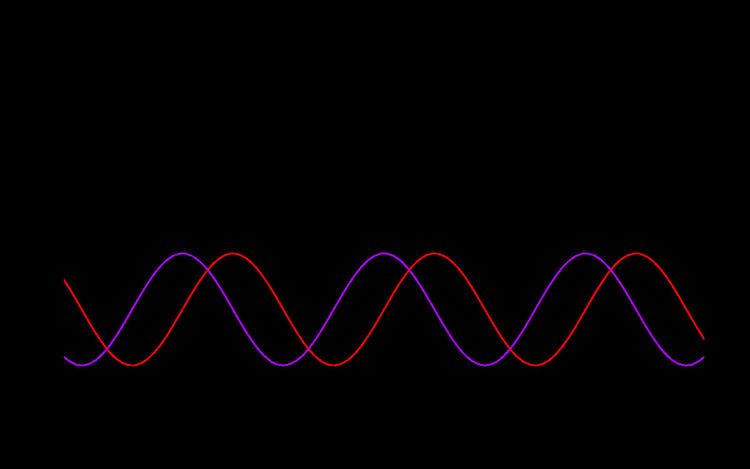 | ||
The concept of negative and positive frequency can be as simple as a wheel rotating one way or the other way: a signed value of frequency can indicate both the rate and direction of rotation. The rate is expressed in units such as revolutions (a.k.a. cycles) per second (hertz) or radian/second (where 1 cycle corresponds to 2π radians).
Contents
Sinusoids
Let ω be a nonnegative parameter with units of radians/sec. Then the angular function (angle vs. time) −ωt + θ, has slope −ω, which is called a negative frequency. But when the function is used as the argument of a cosine operator, the result is indistinguishable from cos(ωt − θ). Similarly, sin(−ωt + θ) is indistinguishable from sin(ωt − θ + π). Thus any sinusoids can be represented in terms of positive frequencies. The sign of the underlying phase slope is ambiguous.
The ambiguity is resolved when the cosine and sine operators can be observed simultaneously, because cos(ωt + θ) leads sin(ωt + θ) by 1/4 cycle (= π/2 radians) when ω > 0, and lags by 1/4 cycle when ω < 0. Similarly, a vector, (cos t, sin t), rotates counter-clockwise at 1 radian/sec, and completes a circle every 2π seconds, and the vector (cos -t, sin -t) rotates in the other direction.
The sign of ω is also preserved in the complex-valued function:
since R(t) and I(t) can be separately extracted and compared. Although
which gives rise to the interpretation that cos(ωt) comprises both positive and negative frequencies. But the sum is actually a cancellation that contains less, not more, information. Any measure that indicates both frequencies includes a false positive, because ω can have only one sign. The Fourier transform, for instance, merely tells us that cos(ωt) correlates equally well with both cos(ωt) + i sin(ωt) and with cos(ωt) − i sin(ωt).
Applications
Perhaps the most well-known application of negative frequency is the calculation:
which is a measure of the amount of frequency ω in the function x(t) over the interval (a, b). When evaluated as a continuous function of ω for the theoretical interval (−∞, ∞), it is known as the Fourier transform of x(t). A brief explanation is that the product of two complex sinusoids is also a complex sinusoid whose frequency is the sum of the original frequencies. So when ω is positive,
The Fourier transform of
